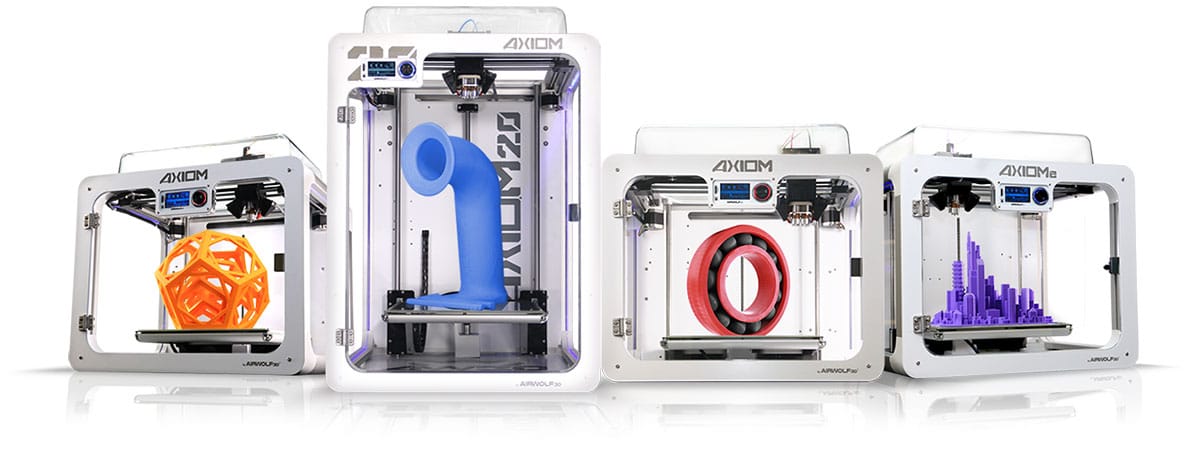
Two new service programs from desktop 3D printers suggest there’s something happening with used equipment.
First, the two announcements.
From Airwolf 3D: The company is now accepting trade-in equipment on new purchases. The idea is that you can turn your older desktop 3D printer into a spanky new AXIOM 3D printer, capable of handling more engineering materials.
The interesting part is that Airwolf 3D provides credit for other vendors’ equipment in their “Buy Back” program. Here’s a chart of their returns for various equipment (in USD$):
- LulzBot TAZ 5 – $900
- LulzBot TAZ 6 – $1,500
- Ultimaker 1 – $500
- Ultimaker 2 – $1,500
- Ultimaker 3 – $1,800
- MakerBot Replicator 2 – $800
- MakerBot 5th Gen – $1,000
- MakerBot Replicator+ – $1,500
- MakerBot Z18 – $2,500
Current pricing on the AXIOM range from USD$3,195 to USD$10K for their flagship AXIOM 20 Dual machine, so the discounts could be worth as much as 78%!
Case Two: LulzBot announced they are now offering “Factory Refurbished LulzBot 3D Printers”. They explain:
Take home a refurbished LulzBot Mini or TAZ 6 3D printer while supplies last! Not only do they look and function as new, these 3D printers are methodically inspected, refreshed, and have passed our stringent printer testing procedures prior to being packaged in a new box. These 3D printers are available for a fraction of the cost for customers in the United States.
Pricing is as follows, all prices in USD$:
- LulzBot Mini v1.03 – $750
- LulzBot Mini v1.04 – $1,000
- LulzBot TAZ 6 – $2,000
These are good prices. For example, a brand new TAZ 6 is priced at USD$2,500, for example.
It may be that the LulzBot offering is a one time thing. I do know that they operate dozens of such machines in their factory to build parts for their equipment, so perhaps they are changing some out for faster equipment, or have outsourced production somewhere else.
Nevertheless, both of these announcements can lead to only one conclusion: used 3D printers are actually worth something.
In the past, this generally was not the case. When desktop 3D printers produced relatively poor quality prints and were vastly less reliable than today’s equipment, it was a lot easier to throw an old machine on the trash heap. The increase in capabilities on newer equipment was so significant that it often rendered the value of the older equipment to something close to zero. I myself have a set of prehistoric machines in the lab that will never run again for this reason.
So why would used machines be salable now? There are a couple of reasons, I think.
One reason is that while newer equipment can 3D print newer materials, the older machines can still capably 3D print “regular” materials in good quality. The quality of 3D prints on most current machines is tremendous, compared to the dark days of the past, and seems to have leveled out. 3D printer manufacturers thus must compete on materials, and less on quality differences. But if you don’t need the extra materials, then an older machine is still good.
The second reason is, perhaps, that the differences between machines and vendors has become very close. So close that buying a used machine in many cases isn’t that much different than buying the current machine – except for the price.
For most people, the ability to 3D print a part is all that is required, and if a machine can do that, why not buy the lowest priced option? For many, this could be a feasible way forward, especially for those with very old machines that don’t have the current quality characteristics.
We have now entered the world of used 3D printers.
Via LulzBot and Airwolf 3D

